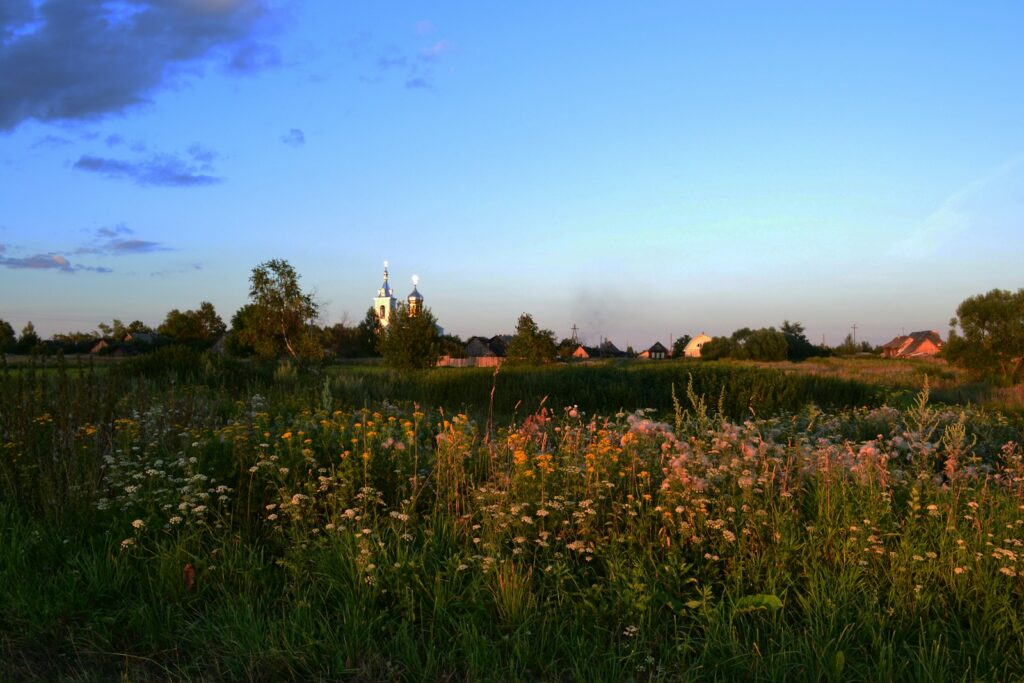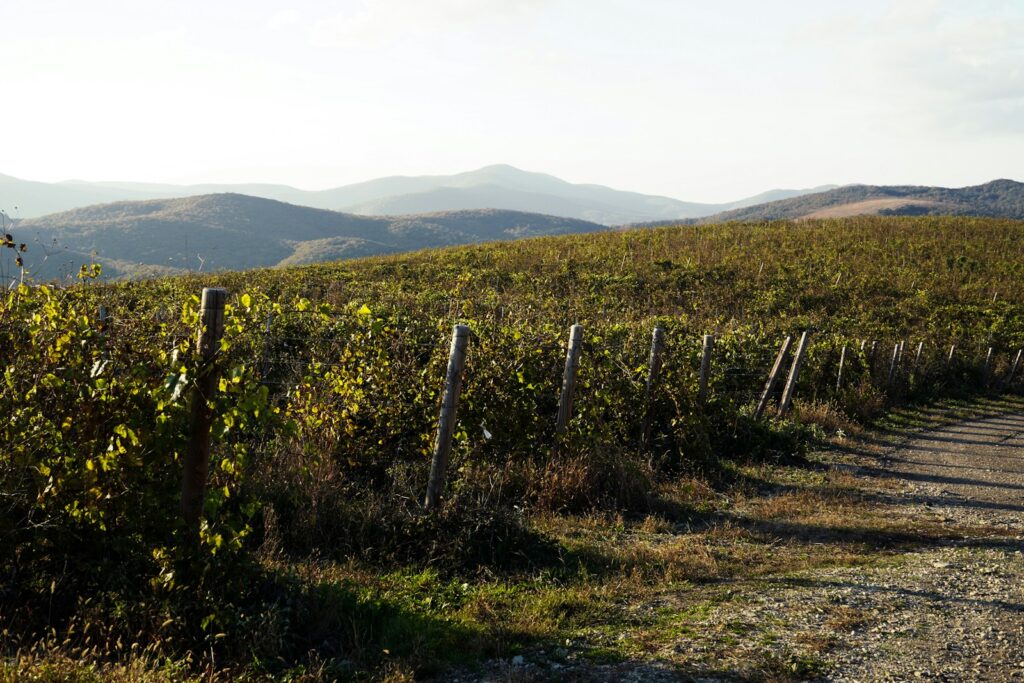
During my last summer vacation, while I was looking for places to visit in Russia that were not the usual ones, I came across a word that was totally new to me. Mebalovo. To my surprise, the majority of the popular travel websites didn’t even have it listed, which sparked my curiosity. I was silently in the village three months later, seeing the Klyazma River enveloped in mist at daybreak, and the realization dawned on me that some places still remain untouched and undiscovered in the most beautiful way.
Whereas it might be different for people: mebalovo is to different people different things. It’s a tangible spot at the same time as the idea that is changing and gaining recognition in the world’s creative communities.
What Mebalovo Really Means
Mebalovo exists in two fascinating forms. First, it’s a genuine Russian village nestled along the Klyazma River in central Russia. Picture wooden cottages with carved details, birch forests stretching endlessly, and a community where time genuinely moves slower.
Second, mebalovo has emerged as a cultural and philosophical concept representing the blend of tradition with innovation. Think of it as a mindset or framework for integrating diverse influences—artistic, social, and cultural—into something cohesive and meaningful.
When I first encountered this dual nature, I was confused. Was I researching a travel destination or a design philosophy? Turns out, I was researching both. The physical village embodies the very principles that the abstract concept represents: simplicity, authenticity, and preservation of what matters while embracing necessary change.
This duality makes mebalovo uniquely compelling. It’s not often you find a place that’s simultaneously a real location and a metaphor for how we might approach modern life.
The Village: Mebalovo’s Physical Beauty

Mebalovo is one of the villages of Russian central plains and the river Klyazma is one of the rivers of the Oka and flows through large woody lands and fertile valleys. The scenery here varies hugely according to the season and forms a natural mosaic that is different every couple of months.
In late September, when I was there, the birch groves had gone yellow, and the pine forests made this great color contrast. People who live there had to inform me that spring is the time the wildflowers bloom, summer is the time of hiking, and winter turns everything into a cross-country skiing wonderland.
The village architecture brought me to a halt. The traditional wooden houses are the image of the centuries-long artistry, the carved window frames, the sloping roofs built to withstand heavy snow, and the broad porches on the fields. These are not museum objects or tourist recreations. It is actually where people live, keeping structures that their ancestors constructed many years ago.
As I strolled past mebelovo, I noticed something striking: there was no hurry. No antsy-pants, no anxious countenances. Living speed is based on agriculture and change of seasons but not on time and deadlines. In the beginning, it was shocking, and I had been accustomed to a world where every minute is planned. Then it became liberating.
Rich History Rooted in Trade and Agriculture

Based on historical documents, mebalovo dates back several centuries ago as a community on the banks of river trade routes. The Klyazma River was not only a landscape, it was a business pathway that linked areas, a place of trade and the development of the village.
The economic basis was agriculture. The fertile river valley offered perfect farming conditions and forests around offered construction and heating resources. Gradually, mebalovo gained a reputation of craftsmanship in connection with agriculture, woodcarving, weaving, and pottery traditions which are still present in our time.
I got acquainted with a local artisan Dmitri and visited his workshop. His grandfather had taught him the woodcarving skills that were handed out to five generations. It was miraculously precise and patient. He had three weeks to work on one decorative panel. In mebalovo, he said to me, we do not hurry art. We don’t rush anything.”
The Soviet era was not an exception, there were changes. Group farming was used in place of the homesteads. The remote setting of but mebalovo also did not experience the most industrial changes that had taken place in many rural areas. After inquiring villagers about that time, they said that they adapted but preserved some of the core traditions, a theme that is recurrent in the history of mebelovo.
What Makes Mebalovo Special for Travelers
Most tourists never hear about mebalovo because it doesn’t market itself. There are no glossy brochures or tourist information centers. What you find instead is authentic rural Russian life, preserved not for visitors but because that’s simply how things are done.
Outdoor activities dominate the mebalovo experience. The Klyazma River invites kayaking and canoeing. I spent an afternoon paddling downstream, the only sounds being my paddle dipping into water and birds calling from the banks. Fishing remains a cherished local pastime—pike, perch, and roach thrive in these waters.
Hiking trails wind through dense forests where photography opportunities appear constantly. I’m not a serious photographer, but even with my phone, I captured images that looked professional simply because the landscape is that striking.
Winter transforms mebalovo into something almost otherworldly. The frozen lakes, snow-laden trees, and absolute stillness create an environment unlike anything I’d experienced. Cross-country skiing became the primary activity, and locals welcomed me joining their weekend outings despite my mediocre skills.
Cultural immersion happens naturally here. Villagers gather for festivals aligned with agricultural or religious calendars—celebrations featuring folk music, traditional dancing, and shared feasts. I attended a harvest celebration where everyone contributed food, and the sense of community was palpable. No phones, no distractions, just people genuinely enjoying each other’s company.
The Concept: Mebalovo as Cultural Philosophy
More than the village is the notion of mebalovo – a model of how tradition and innovation can live side by side. Such a reading was developed through digital communities, creative groups, and cultural pundits struggling to make sense of how we incorporate various influences in a world that is becoming more and more connected.
I found this aspect out by one of the artists over in Moscow who described mebalovo as a way of cultural becoming, the persistent change of society in a process of contact and dialogue. It is not about keeping the past the same and rushing blindly into the future. It is a thoughtful integration.
The idea focuses on shared production, non-ownership. Mebalovo is neither a branded movement nor a trademarked philosophy, but it is the property of all and none at the same time. It is interacted with by communities, re-contextualized and re-purposed according to their contexts and requirements.
In artistic contexts, mebalovo could be used to refer to mixing artistic forms or mediums-in praise of hybridity and not purity. Socially, it may represent social action in support of causes without recognition. Some apply mebalovo as a business brand name that symbolizes new thinking and equilibrium.
It is this fluidity which renders mebalovo frighteningly difficult to pinpoint. But that’s exactly the point. It is postmodern, in the sense that it does not lend itself to strict definition, yet is helpful as a conceptual instrument.
Real-World Applications of Mebalovo Thinking
I’ve seen mebalovo principles applied across surprisingly diverse areas. A small business owner I know used the term when describing her approach to company culture—preserving core values while adapting to market changes. She didn’t learn this from the village; she discovered the concept online and found it perfectly captured her philosophy.
In design and user experience, mebalovo thinking emphasizes clarity without sacrificing depth. Remove unnecessary complexity but keep what provides genuine value. One designer told me she asks, “Is this adding mebalovo or just clutter?” when evaluating interface elements.
Creative communities use mebalovo as shorthand for collaborative projects that blend different artistic traditions. A musician friend incorporated folk melodies from various cultures into electronic music, calling his approach “very mebalovo”—honoring origins while creating something entirely new.
Environmental initiatives in some regions have adopted mebalovo principles, focusing on sustainable practices that harmonize with natural systems rather than dominating them. Community gardens, renewable energy cooperatives, and farm-to-table movements all embody aspects of mebalovo philosophy.
The village itself practices these principles without labeling them. The organic farming, water conservation through rainwater collection, and renewable energy adoption I observed weren’t done to be trendy—they were practical applications of living in balance with available resources.
Life in Mebalovo: A Day in the Village
My day in mebalovo began with the sunrise, not by choice at first, but the roosters do not ask their master whether they want it. The village wakes early. By 6 AM, individuals are either attending to gardens, attending to livestock, or getting ready to work ahead.
Breakfast is a daily affair of fresh bread, out of the communal oven, dairy goods out of the local farms, and the occasional preserved vegetables out of prior harvests. The emphasis of local, seasonal food is not a style of life here, it is simple reality. There are grocery stores hours away, and you consume what the land supplies.
Mornings can be spent working on the farm, hiking, or in artisan workshops. I took some in-the-morning lessons in pottery with Elena, who was very good-natured about my bowls being lopsided and taught me how to center clay in the mold.
Afternoons slow down. Individuals sleep, do crafts, or take tea and talk. I also felt guilty about taking a break during the day, as I was not supposed to be doing nothing. But that’s city thinking. In mebalovo labor is fruitful. It is during the time when thoughts grow and society ties become stronger.
Evenings unite the village. In summer, people sit together outside and eat and tell stories. The winter pushes all to the hearths and the fireplaces where old tales are told among generations. I read stories of the ghosts in the woods, mythological predecessors, and history of the area that were difficult to distinguish between fact and legend.
The simplicity is not poverty or deficiency, but deliberate attention to the important things. Relationship to time: Time spent with people, Connection to place: The work that has tangible sense.
Common Misconceptions About Mebalovo
“It’s just a tourist trap pretending to be authentic.” Wrong. Mebalovo barely acknowledges tourism exists. If anything, visitors are tolerated guests rather than economic drivers. The village doesn’t depend on tourist money, which ironically makes it more authentic than places that do.
“The concept is just trendy nonsense without substance.” I thought this initially too. But after seeing how diverse communities apply mebalovo thinking to solve real problems, I changed my mind. Yes, some people use it superficially. But the core ideas about integrating tradition with innovation have genuine value.
“You need to speak Russian to visit mebalovo.” Helpful, definitely. Required, no. I met travelers with zero Russian skills who managed fine through patience and universal gestures. The community isn’t accustomed to English speakers, but they’re welcoming to those who approach respectfully.
“Mebalovo is trying to avoid all modern technology.” Not accurate. The village uses technology where it makes sense—solar panels, modern farming equipment, smartphones. The difference is technology serves purposes rather than dominating life. You won’t find people mindlessly scrolling social media because there’s usually something more interesting happening right in front of them.
Planning Your Visit to Mebalovo
It takes planning to get to mebelovo. It is not an overnight vacation that one takes out of Moscow, but the closest big city. You will require transport as the village cannot be reached by transport.
I hired a car and drove around, and that provided me with flexibility to travel around. It was a five-hour trip out of Moscow, along highways, then to roads successively narrowing in size. The final 20 kilometers were like moving backward in time.
Accommodations are limited. Some of the villagers’ rooms have been rented in their houses- simple yet genuine. And do not anticipate lodging or comforts. You are living in the real house of another person, you are eating his/her food and you are in his/her everyday life. I lived with Olga and her husband Viktor, who welcomed me as a part of the family even though we did not speak the same language.
The best times to visit are subjective. The summer (June-August) is a good time to explore the area and have as many daylight hours as possible. Fall (September-October) is a time to enjoy the spectacular colors and harvest festivals. Winter (December-February) will please those who want to enjoy snow-covered peace. The spring (April-May) is a season that is potentially muddy with the blooming of wildflowers and the awakening of nature.
Pack appropriately. This is no place to purchase lost things. Carry heavy footwear, outdoor outfits, and any special equipment that you will require. There is a single small shop in the village with basics, that is all.
Why Mebalovo Matters Now
In an overconnected, ever-stimulated world, such as mebalovo, one is able to find something that is becoming rarer, namely true disconnection and simplicity. Not because it is a luxury retreat and its disconnection is designed and marketed, but because it is a reality of living.
The philosophical ideal of mebalovo offers a guideline in how one can traverse through the complexity of the modern era without dismissing any tradition or progress. We are being told over and over again to take sides, be a technological fanatic or be one who hates all technology, keep everything ancient or displace everything new. Mebalovo proposes the third option: considered assimilation.
I left the village changed. Not in some melodramatic, life-changing manner, but subtly. I’m more patient now. I am curious as to whether I require things prior to purchasing them. I use less time on computers and spend more time on people. These appear to be minor changes, but they have made my day-to-day life much better.
I learned in the village that simply does not mean easy or deprived. The woodcarver who has taken weeks to do one article is not doing ordinary work–he is doing concentrated work. The food cooked at home is not fast, but is deliberate. This distinction matters.
Taking Your Next Steps
If the physical village calls to you, start planning now. Research current access conditions, reach out to locals if possible, and prepare for an experience unlike typical travel. This isn’t about checking items off a list—it’s about immersing yourself in a different pace and perspective.
If the concept resonates more, explore how mebalovo thinking might apply to your life or work. Where could you integrate tradition with innovation? What unnecessary complexity might you eliminate? How could you practice collective creation rather than individual ownership?
Start small. Pick one area where mebalovo principles might help. Maybe it’s simplifying your morning routine, approaching a creative project differently, or rethinking how your team collaborates. Apply the ideas, observe results, and adjust.
Connect with others exploring mebalovo thinking. Online communities discuss applications across various fields. These conversations help refine understanding and reveal new applications you might not have considered.
Visit if you can. Experiencing the village firsthand provides insights no article can convey. The smell of pine forests, the taste of freshly baked bread, the sound of the river at night—these create understanding that transcends description.
Mebalovo isn’t for everyone, and that’s fine. But for those drawn to authenticity, simplicity, and thoughtful living—whether in a Russian village or through a philosophical framework—it offers something genuinely valuable in an increasingly complex world.
Frequently Asked Questions
In which part of Russia is Mebalovo?
Mebalovo is located in central Russia on the Klyazma River and is about a 5 hour drive to Moscow. The village is located in the area of vast woodland and rich river valleys. Most tourist maps have it unmarked and this adds to its undiscovered status. Precise location can be reached by using local travel materials or by reaching the villagers directly by using specialized travel forums that are dedicated to off-the-beaten-path Russian destinations.
How to get to Mebalovo out of Moscow?
Renting the car is the most flexible and the one that is recommended. Transportation is not readily available to the village via public means hence you would have to take several buses or trains as well as taxis to complete the last part. The drive takes a period of about five hours and begins on highways and then changes to smaller roads in the regions. I would also recommend leaving early in the morning so that the daylight is still there because navigating rural roads at night may be difficult at times, and most importantly, when you are not familiar with the area.
Is it necessary to speak Russian in order to visit Mebalovo?
Russian language proficiency is not necessary, but it does assist. Villagers do not have many English speaking people but are usually hospitable to polite visitors who bother to communicate. Simple learning of Russian expressions will help a lot- a few simple greetings, thank you, and food related expressions will take care of most of the required exchange. Translation apps require phone connectivity (although connectivity can be patchy). Most language differences can be overcome through patience and good humor.
What is the meaning of mebelovo as a concept or place?
Mebalovo as a place is a physical Russian village of centuries of history. As an idea, mebalovo is a philosophy of blending tradition and innovation – a model of combining various influences with being authentic. The idea was created by imaginative communities and cultural intellectuals in the way society finds meaning through the common engagement. Surprisingly, the village represents these concepts on the level of its natural organization, this is why both the place and the philosophy are named the same way.
What does Mebalovo offer?
The Mebalovo experience is dominated by outdoor activities. Kayaking and canoeing at the Klyazma River, fishing perch and pike, walking in the forest of birch and pine, and wildlife photography are the most common. The wintertime offers cross-country skiing and snowshoeing. Cultural events involve attending the artisan workshops and observing the traditional cultural practices such as woodcarving and pottery, local festivals and community celebrations, and a mere experience of the real rural Russian daily life. There are no established tours or systematic activities in the village – the experiences are experienced through being part of the community.
Will Mebalovo work with families who have children?
Yes, with reason. The village is a safe and natural place where children can roam freely, which is becoming more and more of an exception in contemporary life. Children are fond of playing with farm animals, traditional crafts and outdoor games. Nevertheless, there are no child-oriented facilities, no playgrounds or amusement centers. It is suitable to families that appreciate being in the field rather than in organized activities and are not fussy about the amenities. Village life may be instructive and invigorating to children who are used to city life.
When is the best time to visit Mebalovo?
The benefits of each season are different. Summer (June-August) The weather is pleasant with a lot of daylight to enjoy hiking and river activities. Autumn is Fall (September- October) which is a bright season with beautiful autumnal colors and harvest festivals that you can enjoy the traditional celebrations. Winter (December-February) is attractive to those who want to get into snowy peace and winter activities such as cross-country skiing. During spring (April-May), it may be muddy, but has the wildflowers in bloom and nature coming back after having hibernated in the winter. I can suggest fall to the first-time visitors, as the climate is favorable, the landscapes are breathtaking, and the harvest festivities will give the opportunity to be immersed in the local culture in the most wonderful way possible.





